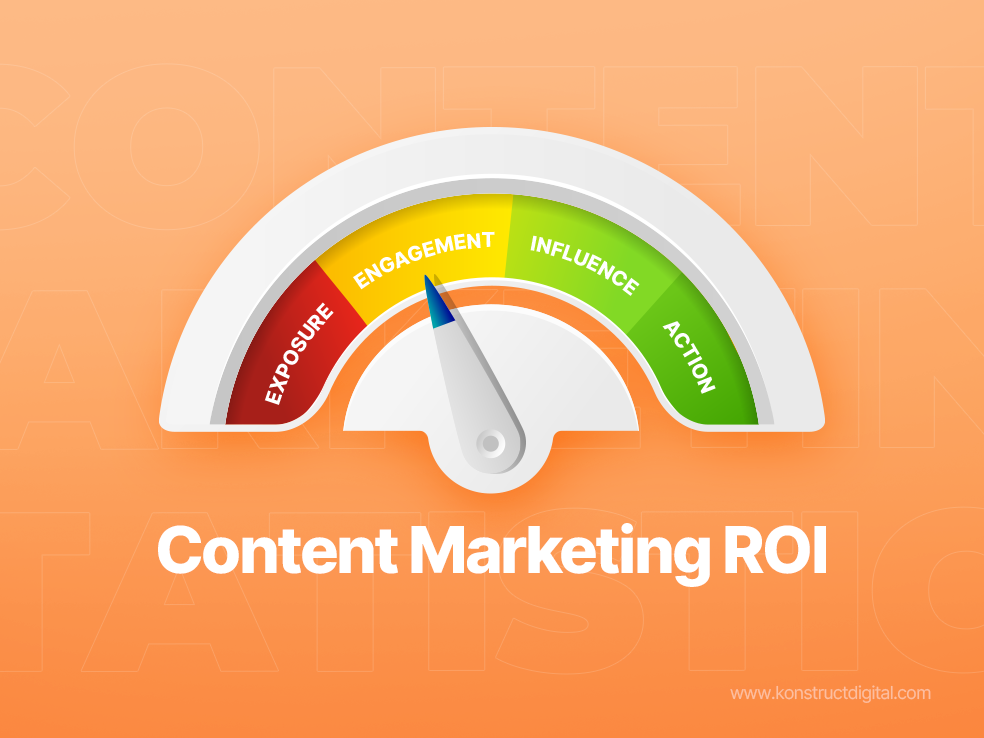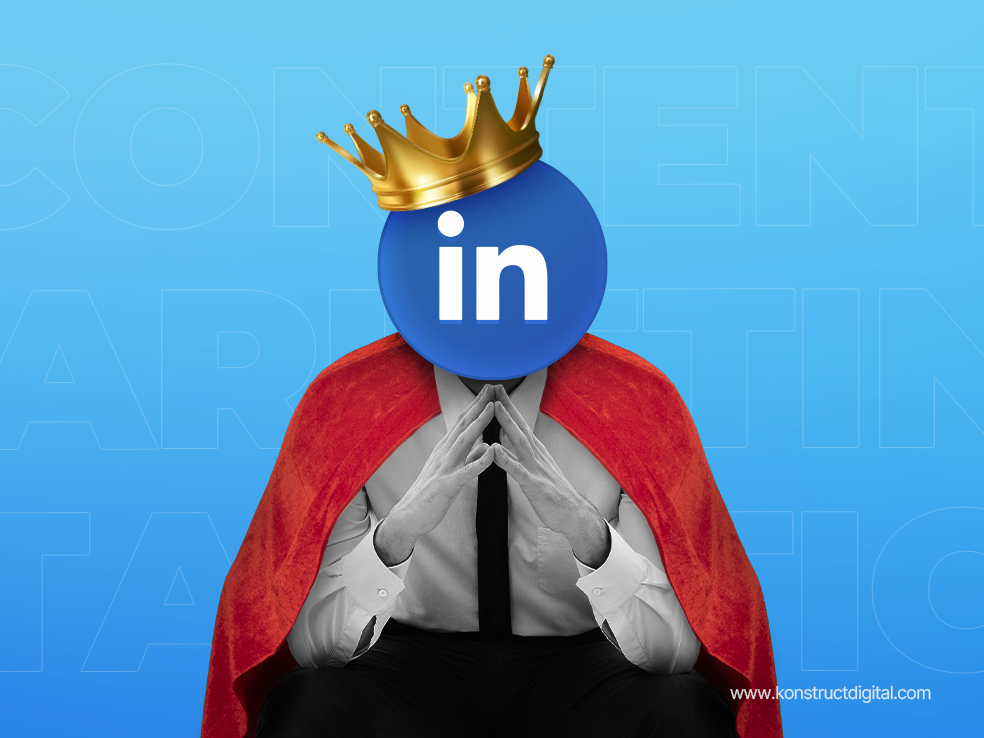Table Of Contents
- Why Content Marketing is Like Finding Your Soulmate Online
- Content Marketing ROI Statistics
- SEO Content Marketing Statistics
- Blogging Statistics
- Email Content Marketing Statistics
- Video Content Marketing Statistics
- Social Media Content Marketing Statistics
- Audio and Podcast Content Marketing Statistics
- Other Interesting Statistics
- Let’s Build A Successful Content Marketing Strategy
Did you know that content marketing costs 62% less than traditional marketing but drives 3 times as many leads?
If you’re not taking content marketing seriously, you’re literally throwing money in the trash. Well…figuratively. But you may as well be garbaging cold hard cash if you’re willing to miss out on this literal goldmine of an opportunity. With such a fantastic rate of return, you can’t afford not to include content marketing in your overall marketing strategy.
How do you even begin to build a winning content marketing strategy? We believe a good starting point is to look at where other content marketers have found success in their marketing efforts. Most successful content marketers believe there’s no better way of figuring this out than looking at content marketing statistics. And we agree!
Statistics can show where other content marketers have found success, how they generate leads, and that the global rate of washing hands after using a public washroom is 64.4%. Ew…But seriously, statistics give a better understanding of your audience, and key content marketing trends, and help you choose the right content marketing formats and channels to build a winning content marketing strategy.
In this article, we’re going to share some of the most important content marketing statistics you need to know to create a fantastic content marketing strategy.
Why Content Marketing is Like Finding Your Soulmate Online

We can think of content marketing like online dating. You initially come across a profile that looks interesting. It catches your attention and from there you want to know more, you click on the profile and each interaction from their profile page to the messages you exchange reveals more about that person. In the same way, content marketing is a way of courting your audience, building anticipation, and developing a relationship with your audience across different online channels.
If your content is interesting, people want to know more about you and will click, share and link to your content. Much like that pivotal moment in online dating (taking the next step to meet someone in person) for content marketing, that pivotal moment is when your reader decides to take the next step and purchase after interacting with your content.
Besides building a relationship with your customers, the goal of content marketing is to increase brand awareness, build thought leadership, educate your audience, and ultimately, bring more leads to your sales team.
Here are some of the latest content marketing statistics to start off.
- People spend an average of 7 hours per day consuming digital content. (Forbes)
- Email campaigns (87%) and educational content (77%) are the top content marketing methods B2B marketing teams use to nurture their audience. (Content Marketing Institute)
- 57% of B2B buyers make their purchase decision before ever speaking to a salesperson. (SERP Watch)
- 91% of B2B marketers use content marketing to reach customers. (Content Marketing Institute)
- 72% of marketers who have used content marketing say it has increased their number of leads. (Content Marketing Institute)
- 69% of content is created for the top of the funnel. 43% is created for the middle, 20% for the bottom, and 18% for retention. (SEMRush)
- After reading custom content, 82% of consumers feel more positive about a brand. (Demand Metric)
Content Marketing ROI Statistics

Much like that first date with your online crush, your dating ROI, i.e. what you get at the end of the date, be it a kiss, hug, or perhaps more…will be directly related to how much effort you put into the date in the first place. In the same way, content marketing ROI is the percentage of revenue you gained from your content marketing efforts relevant to what you spent.
Your content marketing ROI is arguably the most important measure of success of your content marketing strategy as it’s directly related to your revenue. Measuring your content marketing ROI helps set a foundation for building a strong data-driven, revenue-generating content marketing strategy.
- Content marketers who measure ROI are 12 times more likely to be generating a greater year-over-year return. (HubSpot)
- Email marketing has an ROI of $42/day for every dollar spent. That’s an ROI of 4,200%. (HubSpot)
- 75% of content marketers say they drive better ROI when they add visuals to their content. (Contently)
- Marketers who prioritize marketing efforts are 13 times more likely to see positive ROI. (HubSpot)
SEO Content Marketing Statistics
Clownfish and sea anemones enjoy a symbiotic relationship in the ocean much like content marketing and SEO enjoy a symbiotic relationship in the digital marketing world. When you create high-quality content that’s focused on your audience and optimized with targeted keywords, you’ll increase your search rankings, which will lead to more organic traffic to your site, and ultimately more sales.
- 68% of online experiences begin with a search engine. (Brightedge)
- Google is responsible for more than 90% of the world’s search queries online. (SparkToro)
- 95% of people only look at the first page of search results. (Brafton)
- 53% of shoppers say they always do online research before making a purchase to ensure they are making the best possible choice. (Google)
- 53% of all web traffic comes from organic search. (Bright Edge Research)
- 75% of brands say the most efficient content marketing tactic they use is search engine optimization. (SEMRush)
Blogging Statistics
Blogging is a great form of content marketing to build a relationship with your target market, share thought leadership and educate your audience. When done right, blog content creation can yield fantastic results for your content marketing ROI and companies that actively blog have seen positive returns. Your content has to be engaging and informative – if it’s not then your readers will hightail it outta there faster than a parent dropping their kid off at school after the summer break.
- Companies with blogs generate 67% more leads per month than companies without. (Demand Metric)
- Companies that blog receive 97% more links to their website. (SERP Watch)
- 70% of people prefer to get information from blogs than traditional advertisements. (Demand Metric)
- 56% of marketers who leverage blogging say it’s effective and 10% say it generates the biggest return on investment. (HubSpot)
- How-to articles are the most popular content formats (77%), followed by news and trends (49%), and guides and ebooks (47%). (Statista)
- Engagement starts to drop for posts with a reading time longer than seven minutes. (Medium)
- 54% of decision-makers say they spend more than one hour per week reading and reviewing thought-leadership content. (Edelman/LinkedIn)
- The average blog bounce rate is 82.4%. (Siegemedia)
- 55% of marketers say blog content creation is their number one inbound marketing priority. (HubSpot)
- 47% of B2B customers view three to five posts before talking to a salesperson. (Siegemedia)
- 73% of readers admittedly “skim” a blog post. (SERP Watch)
- Long-form blog posts generate more than nine times more leads than short-form blog posts.
- 65% of companies that succeed in content marketing run content audits more than twice a year. (SEMRush)
Email Content Marketing Statistics

Despite many naysayers arguing that email is dead, this isn’t the case when it comes to content marketing. Email is still a fantastic content marketing tool and many B2B marketers still view email as an effective marketing channel in their content marketing strategies.
According to a study by McKinsey & Company, email marketing is up to 40 times more effective than social media. The same study also shows that the buying process in email marketing happens three times faster than in social media. Here are more stats that demonstrate the value of email marketing:
- There are 4 billion daily email users. This number is expected to climb to 4.6 billion by 2025. (Statista)
- 72% of consumers prefer their marketing communication to be via email over other channels. (SERP Watch)
- 87% of B2B marketers say email is one of their top free organic distribution channels. (Content Marketing Institute)
- Segmented emails have conversion rates 208% higher than batch-and-blast. (SERP Watch)
- Marketers who use segmented email campaigns noted as much as a 760% increase in revenue. (HubSpot)
- 74% of Baby Boomers think email is the most personal channel to communicate with brands. (HubSpot)
- Brands that use A/B tests in their email marketing campaigns drive an ROI of 48:1, compared to an ROI of 35:1 for those who don’t make use of A/B tests. (Content Writing Jobs)
- Brands that use live content in their emails often or always generate an ROI of 50:1, compared to an ROI of 39:1 for those who never use live content. (Content Writing Jobs)
- Fridays see the highest email open rates (nearly 19%), compared to the lowest open rates (17%) on Saturdays. (Campaign Monitor)
- The global email marketing market was valued at $7.5 billion in 2020 and is projected to increase to $17.9 billion by 2027. (Statista)
- 31% of B2B marketers say email newsletters are the best way to nurture leads. (Content Marketing Institute)
Video Content Marketing Statistics
Video marketing is becoming increasingly popular. Can you believe that content marketers who use video get around 66% more leads per year and adding video content to your website can drive an 80% increase in conversion rates? With such stellar data in its favour, video content is hard to ignore!
Video content that provides your audience with useful information to invoke interest in your products or services is a very helpful tool in any content marketer’s arsenal. Visual content can be used at any stage of the sales funnel to speak to different stages of the buyer’s journey and is especially useful for developing educational and entertaining content.
- 59% of marketers that perform content marketing use video. (HubSpot)
- 75% of consumers aged 18-34 watch videos at least once daily. (HubSpot)
- Marketers who use video get 66% more leads per year. (Aberdeen Group)
- 26% of consumers are less likely to finish a video if they need to turn their phones horizontally to watch. (Siegemedia)
- YouTube is the second-largest search engine globally. (Tubica)
- YouTube is the second most popular channel for businesses sharing video content. (Oberlo)
- YouTube reaches more mobile users aged 18 to 24 than any TV network. (Google)
- 46% of content marketers who leverage short-form video consider it effective. (HubSpot)
- 60% of people would rather buy a product recommended by a YouTuber than one recommended by a movie or TV star. (SERP Watch)
- 88% of video marketers feel that video gives them a positive ROI. (Wyzowl)
- 39% of viewers would never watch a video from a brand again if they had a negative viewing experience on mobile. (Animoto)
- 79% of people say they’ve been convinced to buy or download a piece of software or app by watching a video. (Wyzowl)
- 43% of video marketers say video has reduced the number of support calls they’ve received. (Wyzowl)
- 96% of people have watched an explainer video to learn more about a product or service. (Wyzowl)
- 50.9% of B2B decision-makers use YouTube to research purchases. (Hootsuite)
Social Media Content Marketing Statistics

Social media content marketing remains one of the best channels for businesses to engage directly and build relationships with their audience. It’s also one of the most fun options for content marketing as social media platforms allow you to promote your brand in more creative ways. But when it comes to your social media content strategy, you don’t need to be on every platform – you just need to be where your target market is. For example, when it comes to B2B marketing, LinkedIn remains the most popular social media platform.
- 54% of social browsers use social media to research products. (Oberlo)
- 54% of Gen Z and 49% of Millenials say social media is their preferred channel for ad influence. (Hubspot)
- 92% of B2B marketers prefer LinkedIn to other social networks. (SERP Watch)
- LinkedIn is 277% more effective at lead generation than Facebook or Twitter. (Hubspot)
- 82% of B2B markers report finding the greatest success on LinkedIn. (LinkedIn Marketing Solutions)
- Over 46% of all social media traffic to company websites comes from LinkedIn. (LinkedIn)
- 79% of people say that user-generated content on social media significantly impacts their purchasing decisions. (Stackla)
- 64% of consumers report that watching a marketing video on Facebook has influenced a purchase decision. (Hubspot)
- 85% of marketers rank short-form videos as the most effective type of social media content. (HubSpot)
- Video ads perform better than other ad formats on Facebook. (DataBox)
- 93% of Twitter community members are open to brands getting involved in the conversation, such as providing help and support. (Twitter)
- 90% of people on Instagram follow a business. (Instagram)
- Answering a complaint on social media can increase customer advocacy by 25%. (Convince & Convert)
- 83% of people use Instagram to discover new products and services and 87% said they took a specific action, like making a purchase, after seeing product information. (Facebook for Business)
- In 2020, LinkedIn was voted the most trusted network. (Business Insider)
Audio and Podcast Content Marketing Statistics

Online audio and podcast marketing has grown in popularity in recent years. In this busy time where convenience is key, audio and podcast marketing are a great way to reach your target audience. You don’t need to disrupt your audience’s busy day but can rather blend right into their usual activities as they can multitask – go to the gym, do the laundry, drive their car – while listening to a podcast.
- 45% of global internet users between 25-34 listen to podcasts (BuzzSprout)
- 43% of monthly podcast users listen to an entire podcast episode (Edison Research)
- Spotify is the most popular online audio brand. (Forbes)
- By 2028, podcasting is expected to be a $94.8 billion industry. (Insider Intelligence)
- There are more than 2 million active podcasts. (Podcast Insights 2021)
- 65% of podcast listeners listen to an entire podcast episode. (MIDAS Survey)
By the way, if you love learning about marketing, we’ve compiled a list of 10+ bingeable digital marketing podcasts you should be tuning into.
Other Interesting Statistics
There are plenty of other content marketing options for content marketers to consider. For example, white papers, infographics, and ebooks are especially useful for B2B content marketing and are proving to be valuable formats to share thought leadership and educational content and generate leads.
- 84% of people using infographics find them effective. (Forbes)
- 78% of B2B buyers use case studies when researching purchases. (SERP Watch)
- 76% of buyers say they will share information in exchange for a white paper, 63% for an e-book, and 57% for a case study. (Curata)
Let’s Build a Successful Content Marketing Strategy
Much like your goal of meeting your online crush in person, content marketing aims to convert your audience into buyers. But as with online dating, it’s the lead-up to that conversion that really counts. It isn’t just about getting people to your website, it’s also about creating a full user experience, building anticipation, piquing their interest, and keeping them there!
When you create great content, you can build relationships with your audience and ensure your brand remains top of mind.
You don’t need to produce every type of content under the sun, but rather create the content that is most relevant and appealing to your audience. Using content marketing statistics is an excellent starting point to figure out where your audience is and what content marketing efforts will work best to successfully nurture those leads and convert your audience. It’ll also help you develop a sustainable content marketing budget and strategically channel your marketing efforts in the right direction.
If you’re feeling overwhelmed with all the content marketing stats out there and you’re not sure where to begin to build a strong documented content marketing strategy, Konstruct Digital is here to help! Our team of digital strategists and content specialists has supported many businesses in developing winning content marketing strategies that yield fantastic results.
Need help with B2B Content?
Learn more about Konstruct's B2B Content Services
More B2B Content Resources
- Should You Replace Your Content Marketer with AI? Maybe…
- LinkedIn B2B Marketing Examples That Made Us Say, “$h!t, I wish I thought of that!”
- 9 B2B Social Media Dos and Don’ts That’ll Change Your Social Game
- Stop Snoozing on These 7 B2B Content Marketing Trends
- B2B Marketing Copywriting: 10 Tips for Writing Persuasive Copy for Today’s B2B Buyers
- 9 Wow-Worthy B2B Content Marketing Examples To Inspire Your Content Strategy
- 8 Irrefutable B2B Social Media Marketing Benefits
- The Proven Formula for a Rock-Solid LinkedIn Content Strategy
- 999,999 Tips for Creating On-Brand SEO Content
- 6 Brands That Are Killing it on TikTok


